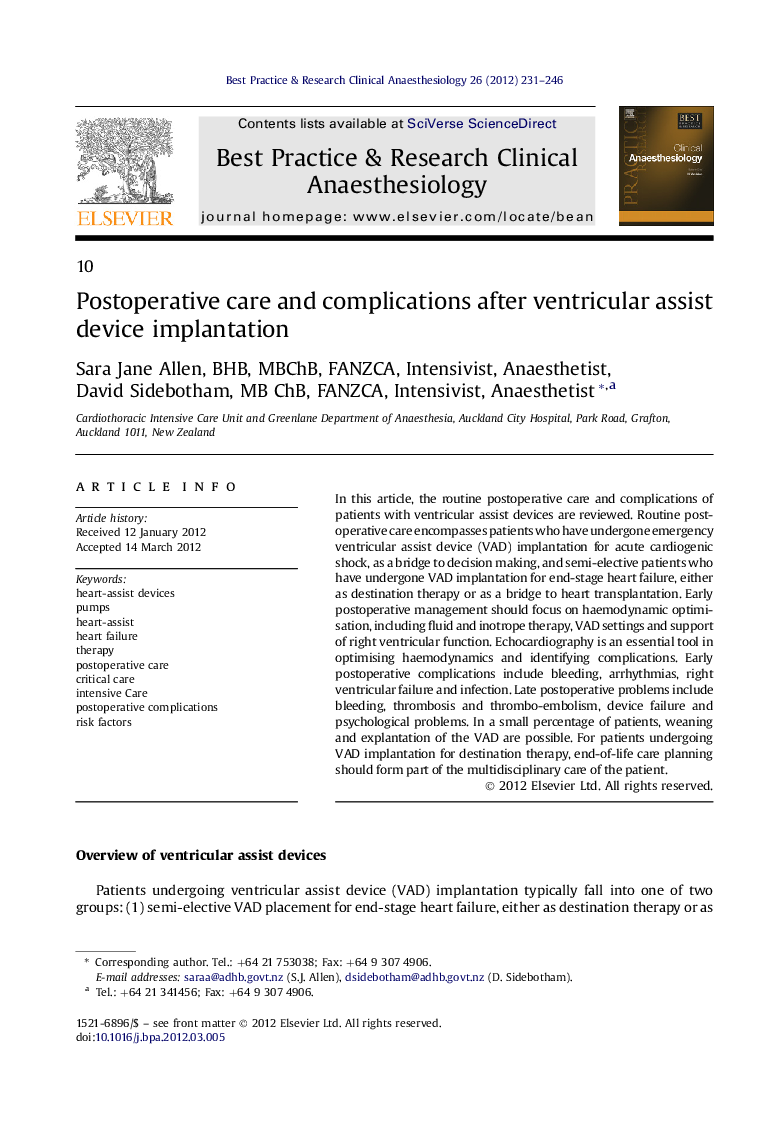| Article ID | Journal | Published Year | Pages | File Type |
|---|---|---|---|---|
| 2748470 | Best Practice & Research Clinical Anaesthesiology | 2012 | 16 Pages |
In this article, the routine postoperative care and complications of patients with ventricular assist devices are reviewed. Routine postoperative care encompasses patients who have undergone emergency ventricular assist device (VAD) implantation for acute cardiogenic shock, as a bridge to decision making, and semi-elective patients who have undergone VAD implantation for end-stage heart failure, either as destination therapy or as a bridge to heart transplantation. Early postoperative management should focus on haemodynamic optimisation, including fluid and inotrope therapy, VAD settings and support of right ventricular function. Echocardiography is an essential tool in optimising haemodynamics and identifying complications. Early postoperative complications include bleeding, arrhythmias, right ventricular failure and infection. Late postoperative problems include bleeding, thrombosis and thrombo-embolism, device failure and psychological problems. In a small percentage of patients, weaning and explantation of the VAD are possible. For patients undergoing VAD implantation for destination therapy, end-of-life care planning should form part of the multidisciplinary care of the patient.
